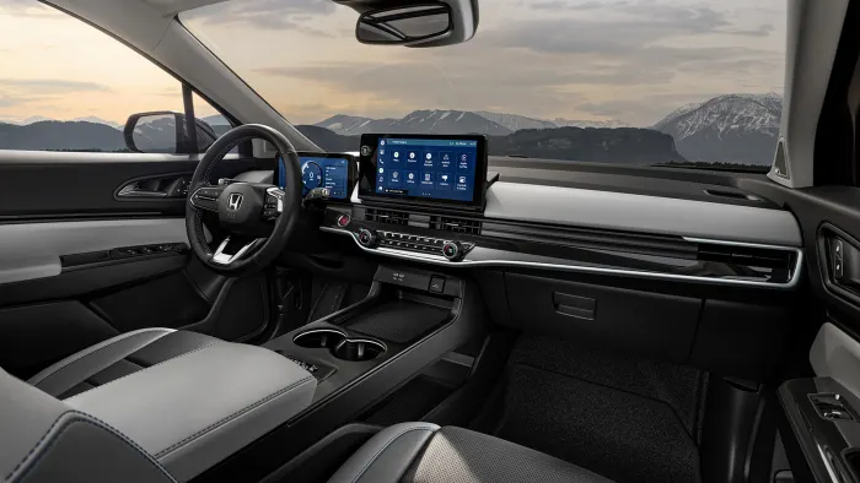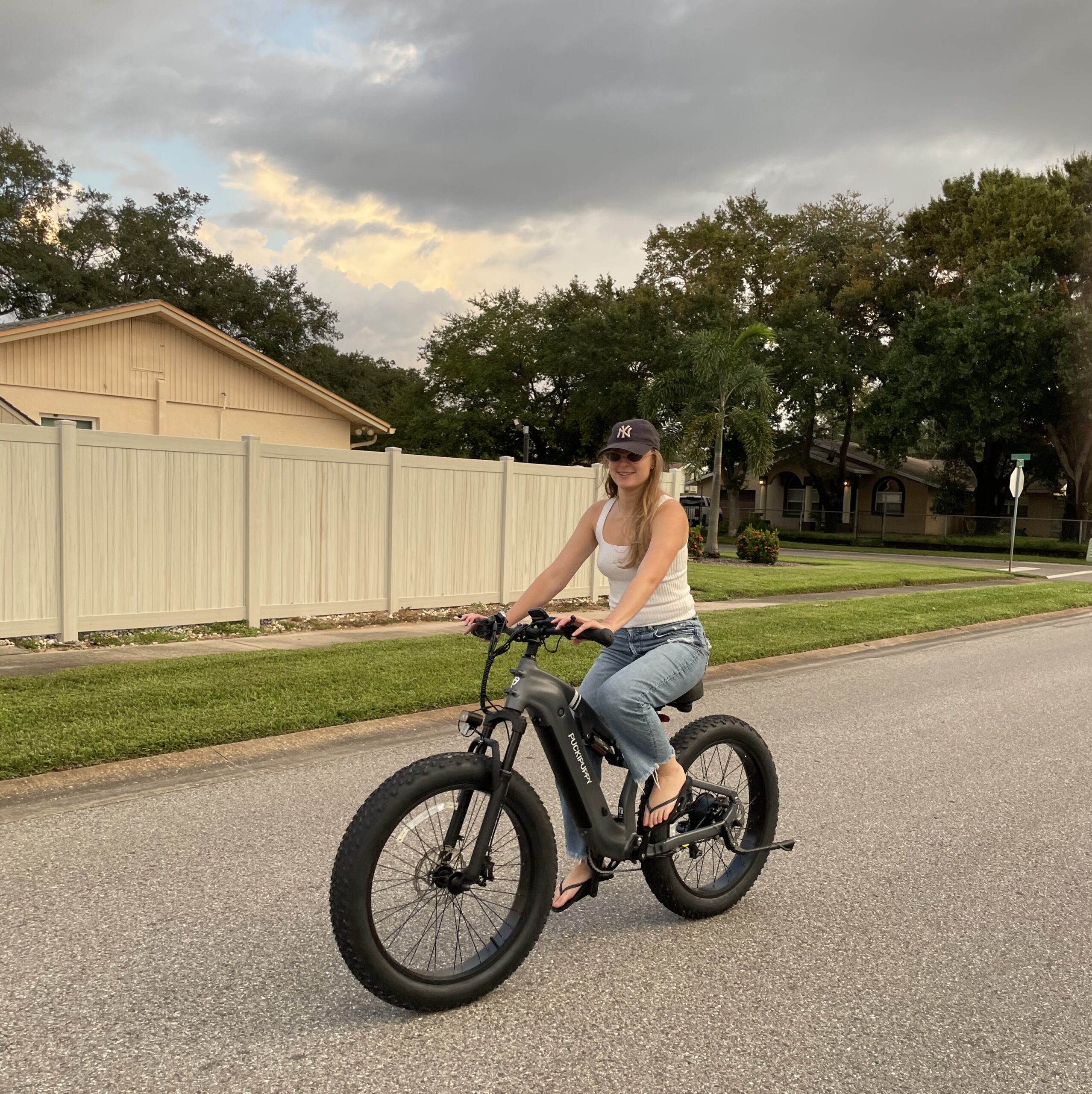Sign up for daily news updates from CleanTechnica on email. Or follow us on Google News!
Honda has delivered about 13,000 of its Prologue electric SUVs in America since September 30. That’s not enough to worry Tesla, but it is enough to make the Prologue the fifth best selling electric vehicle in the US — an impressive performance for a car that is new to the market. What are the reasons for its success? Bloomberg suggests it is partly because two thirds of Honda SUV drivers in the US trade in their vehicle for another Honda. “It’s an iPhone-like level of loyalty seldom seen in the brutal business of making and selling cars — and it’s enabled the automaker’s first electric vehicle to quickly cut into Tesla’s supremacy by appealing to loyal Honda customers who have been waiting for an affordable alternative to the Tesla Model Y from their favorite car brand,” Bloomberg says.
At Paragon Honda in Queens, New York, the gasoline-powered CR-V is typically the top seller in the Honda lineup, according to finance manager Larry Abreu. In September, the dealership moved one Prologue for every three CR-Vs, in part because a stack of incentives made them virtually the same price. “There’s just so much value, it’s hard to pass up,” Abreu explained.
Much of the Prologue’s draw lies in just how unremarkable it is. Its starting price before incentives or fancier options like all-wheel drive is $47,400 — $400 less than the average market value of all US cars in September, according to Bloomberg Intelligence. Unlike many EVs, the Prologue’s performance will set no one’s hair on fire, but it does feature thoughtful and elevated details of the kind Honda customers have come to love. There’s a huge storage bin under the center console, a massive sunroof, a supersized smartphone charging pad and a rash of buttons and knobs instead of the touchscreen hunt and peck that is typical of the Tesla driving experience.
Unlike most Hondas, however, the Prologue will skip the gas station and, for the most part, the mechanic. EVs, which don’t need oil changes or air filters, require almost $1,000 less to maintain every year than similar gasoline-powered models, according to AAA. Honda is already one of the most reliable auto brands, and adding a new vehicle to the lineup that’s even more reliable is a nifty engineering trick. When asked why they chose a Prologue, Honda buyers cited trust in the brand followed by value, according to company spokeswoman Natalie Kumaratne. In fact, almost two thirds of Prologue buyers have owned a Honda before and nearly 80% have never owned an EV. Brand loyalty is strong among Honda owners.
Mike Eppink traded in his 2022 Honda Pilot — a full-size SUV — for the Prologue, in part to save money on gas. His 14-year-old son plays baseball, and shuttling to and from practices and games was costing $250 a month. “I like where the electric cars are going and they’re really not that expensive once you really look into the numbers,” Eppink told Bloomberg. “Our monthly payment went up a bit, but with the gas savings, mentally, we still feel like we’re saving.”
Reviewing The Honda Prologue

Autoblog contributor Nathan Adlennov test drove a Honda Prologue recently. He writes that it is designed for both road trips and daily driving, yet feels surprisingly familiar. “I must say that the Honda Prologue is one of my favorites among the Ultium family. Yes, even among the sportier ZDX, Lyriq, Blazer, and so on, I feel like the Honda is a solid player. Part of that has to do with the aesthetics, which I love, but the rest is based on its overall performance.” The dual-motor Prologue has an EPA range of 273 miles while the single-motor version is rated at 296 miles. Both are equipped with an 85 kW battery. The Prologue will be equipped with a NACS charging port beginning next year. Until then, owners can use Tesla Superchargers with an adapter.
The Prologue is based on the GM Ultium platform and assembled at the Spring Hill factory in Tennessee alongside the Cadillac Lyriq. It is mechanically a virtual twin to the Chevy Blazer EV, which is built in Mexico. In his review, Adlennov was impressed by the appearance of the Prologue. “It’s sleek, and uncomplicated, yet modern and elegant. I know the looks are subjective, but I also know many journalists who agree with me,” he wrote. “Speaking of the ride quality, it is, in my estimation, the best trade-off of any of its platform mates. It’s no Acura NSX, but it has good grip. It’s very well suited for a calm commute and comfortable ride.” Isn’t that what most people want?
Honda designed a majority of this vehicle to look and feel unique, he said. “The overall interior design is mostly Honda so when you sit down behind the steering wheel, it sure doesn’t feel like a Blazer EV. Internal materials, the use of soft, injected molded rubbers, leather, and quality plastics look pleasant. The driver’s 11 inch gauge cluster looks somewhat unique too as it’s separated from the other screen. GM connects their screens in one bezel. The 11.3 inch infotainment screen size is unique to the Prologue, as is their Apple CarPlay system. This is something GM EVs do not offer, which I find odd.” One-pedal driving is included in the Prologue, a feature that appeals to most drivers once they experience it for themselves. He ends his review this way. “This is a solid, comfortable, and easy to live with EV. To say it’s a competent daily driver that has good road manners would be spot on. [Honda] truly dialed in the suspension tuning for folks who drive a lot.”
The Takeaway
What stands out from the Autoblog review is how utterly normal the Honda Prologue is. When Tesla debuted its first car, the Model S, it didn’t just present a battery-powered car, it introduced the “computer on wheels” concept that did away with many of the traditional controls people were used to in their automobiles. Here were cars that could play videos or put on light shows at Christmas or the Fourth of July. Suddenly all the controls were found in menus on a touchscreen. That thrilled some but flummoxed others.
We suspect one of the things about the Prologue that appeals to Honda loyalists is that they feel comfortable driving it immediately. They don’t need video tutorials to understand how to operate it. There is a comfort factor that comes from familiarity. The Prologue looks normal, inside and out, and that is a good thing for many drivers. Suffice to say the new electric SUV from Honda is evolutionary rather than revolutionary. That as much as anything else may be a significant factor in its early sales success.
Honda has been building cars in America for a very long time and has learned a lot about what American tastes. Rather than a sharp break with the past, Honda has poured all that past experience into the Prologue and created a car that appeals to its customer base. The fact that it is powered by a battery instead of a gasoline engine is secondary. Perhaps that is how it should be. And yet, Honda has stepped away from its partnership with GM and plans to build its future EVs itself. Could Prologue be more than just a pleasant name for a new model from Honda? Could it also be a marker laid down by the company that suggests the path it intends to follow on the way to the electric car future? “We’ll see,” said the Zen master.
Have a tip for CleanTechnica? Want to advertise? Want to suggest a guest for our CleanTech Talk podcast? Contact us here.
Sign up for our daily newsletter for 15 new cleantech stories a day. Or sign up for our weekly one if daily is too frequent.
CleanTechnica uses affiliate links. See our policy here.
CleanTechnica’s Comment Policy



